ABOUT
MESOPHOTIC CORAL ECOSYSTEMS
Deep-water reefs, Twilight Zone, Mesophotic Coral Ecosystems… What are they?
We all have this picture in mind of colourful coral reefs, inundated with light, with plenty of fish swimming around. The luckiest nature enthusiasts even had a chance to explore them during snorkelling or diving trips in the tropics. They are the most studied coral ecosystems, as they are relatively shallow — from 0 to 30 metres depth — and, therefore, “easier” to access. But life does not stop at -30 metres, the recreational SCUBA diving limit.
Coral ecosystems are also found between 30 to sometimes as deep as 200 metres.
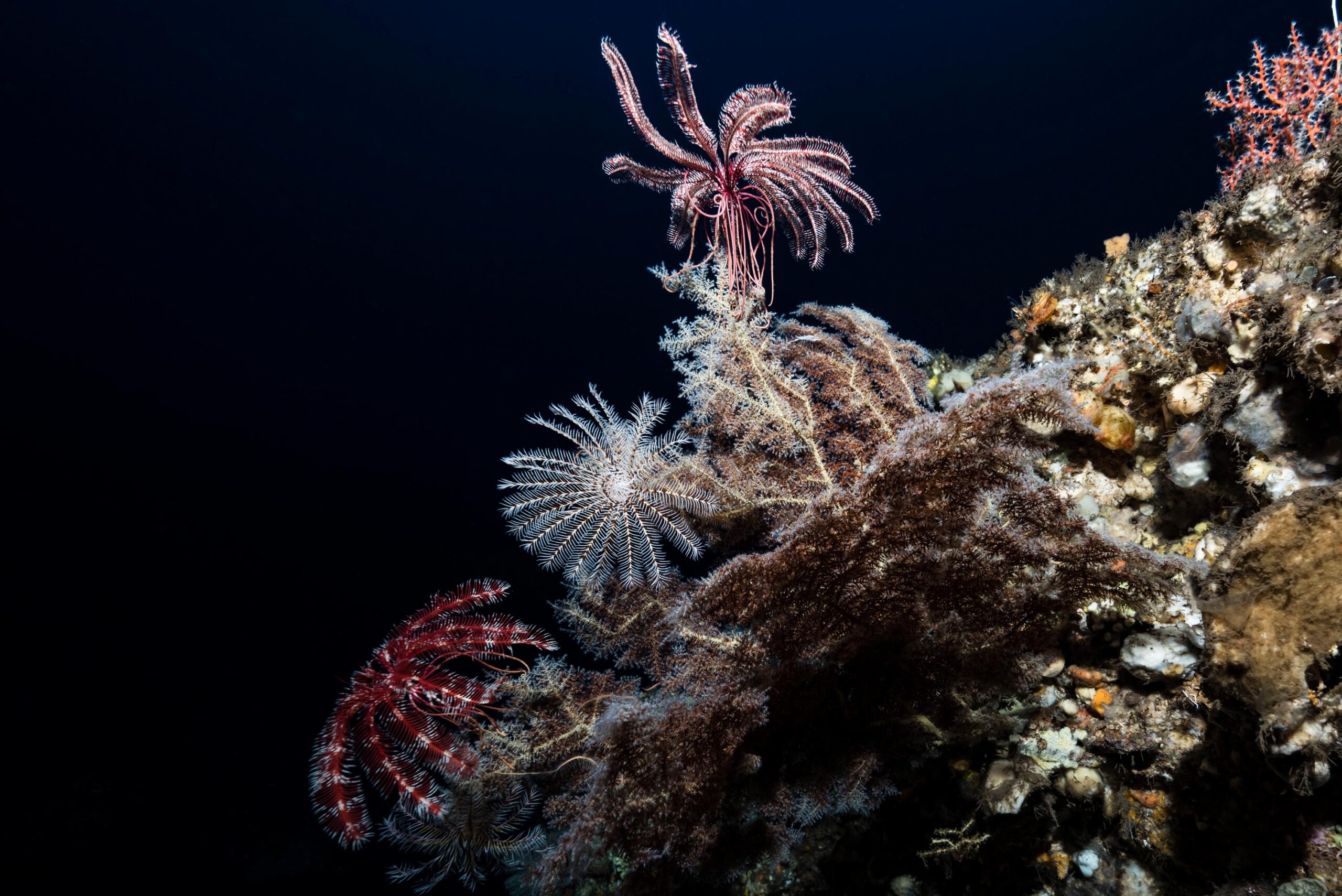
They are the Mesophotic Coral Ecosystems, rarely studied due to the difficulty and risks of working at great depths.
This area is sometimes called the Twilight Zone because the natural sunlight hardly reaches it.
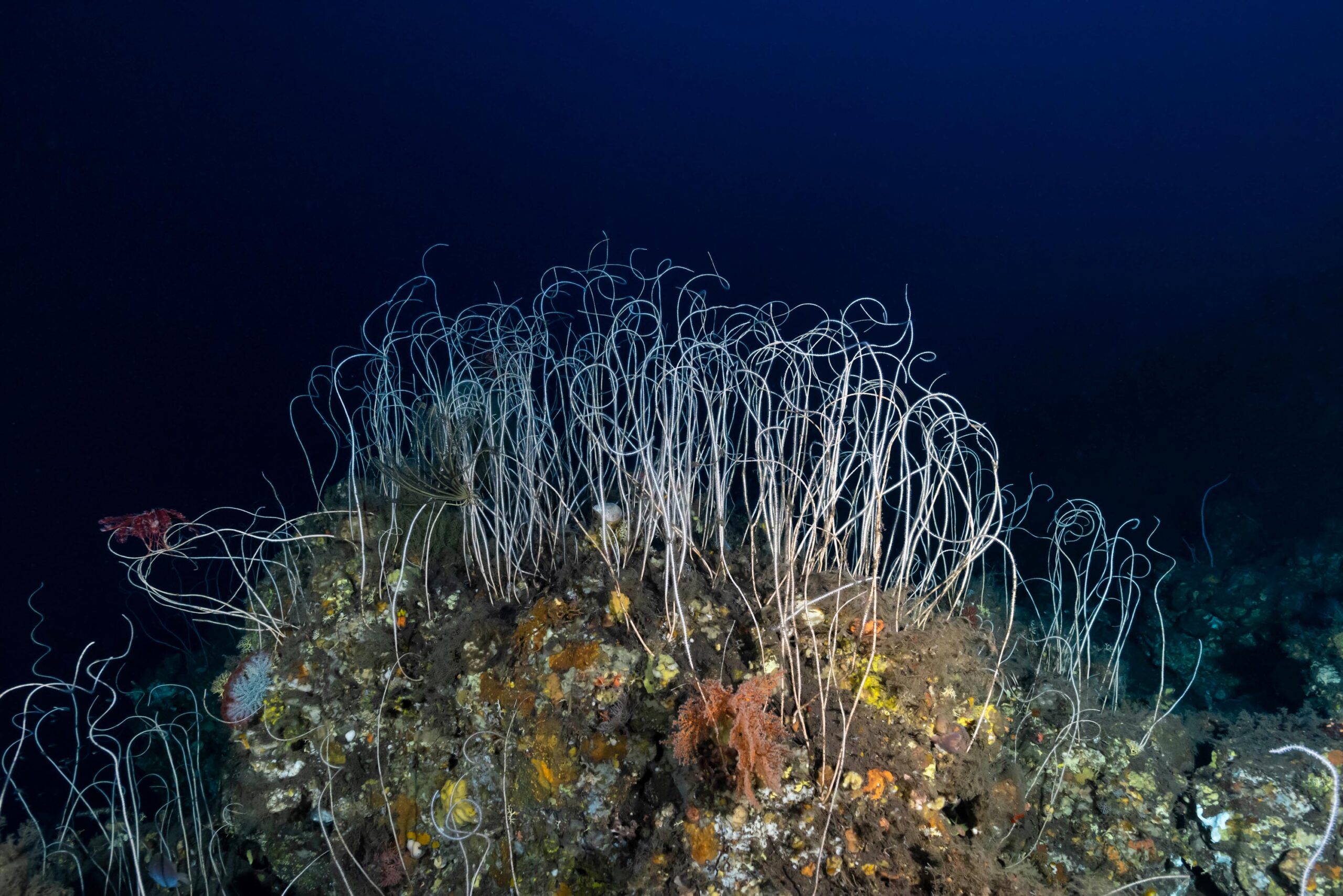
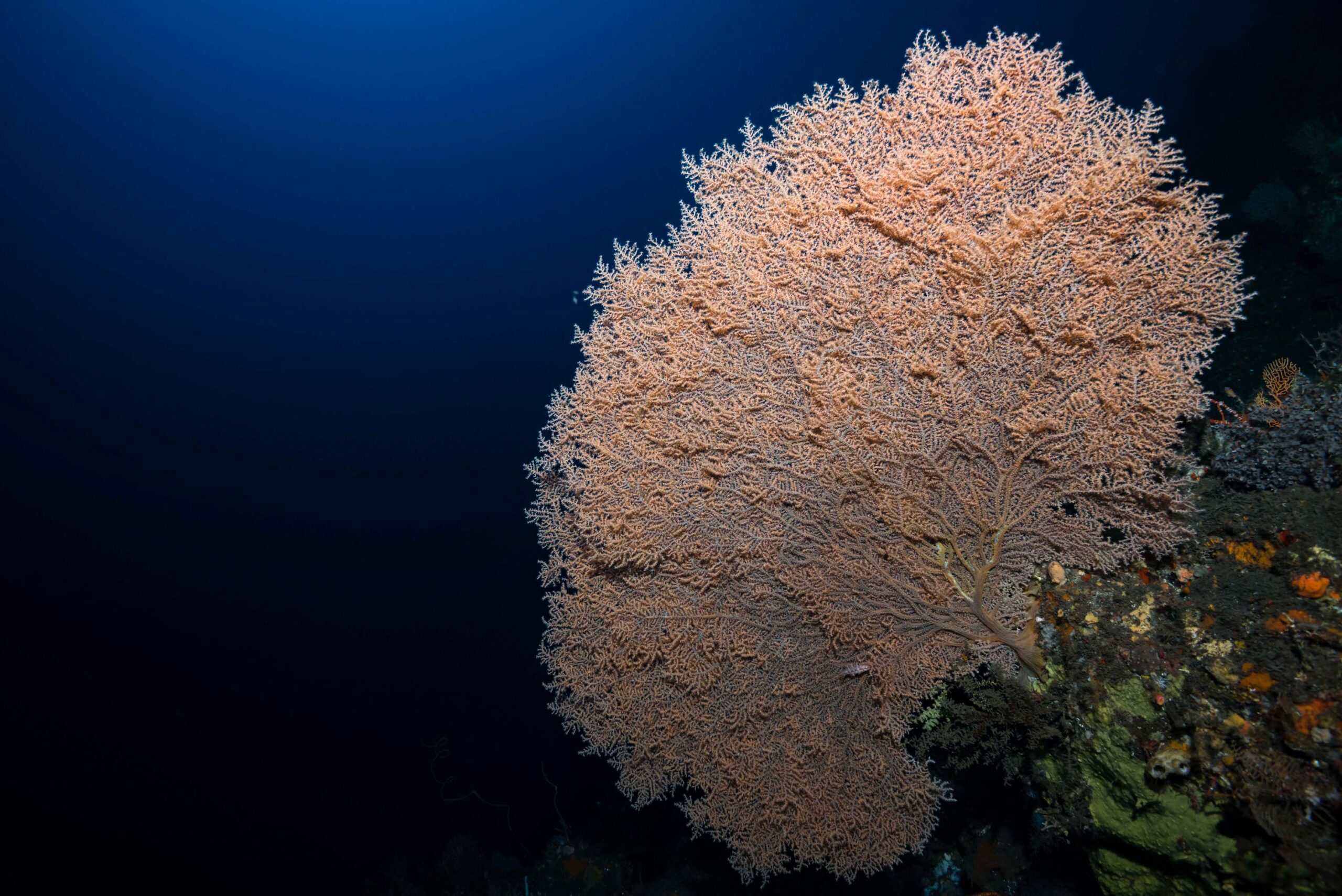
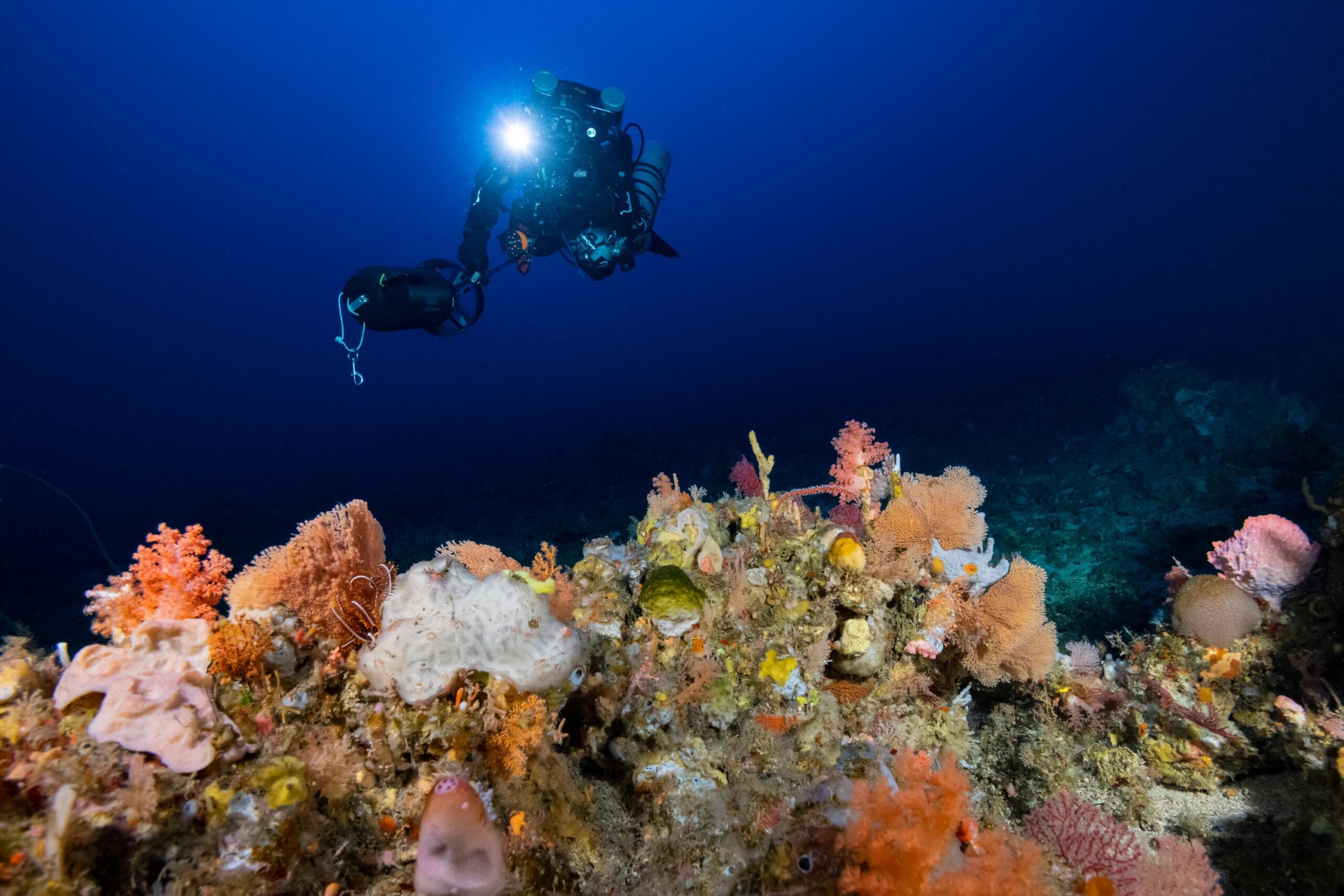
But corals can still be found at these depths, and the colours and diversity of life forms can be stunning, even in the darkness.
A Mesophotic Coral Ecosystem (MCE) is currently defined as an environment where light-dependent coral communities and associated organisms develop, at depths of 30 to sometimes more than 150 metres. MCEs might represent up to 80% of reef HABITATS worldwide.
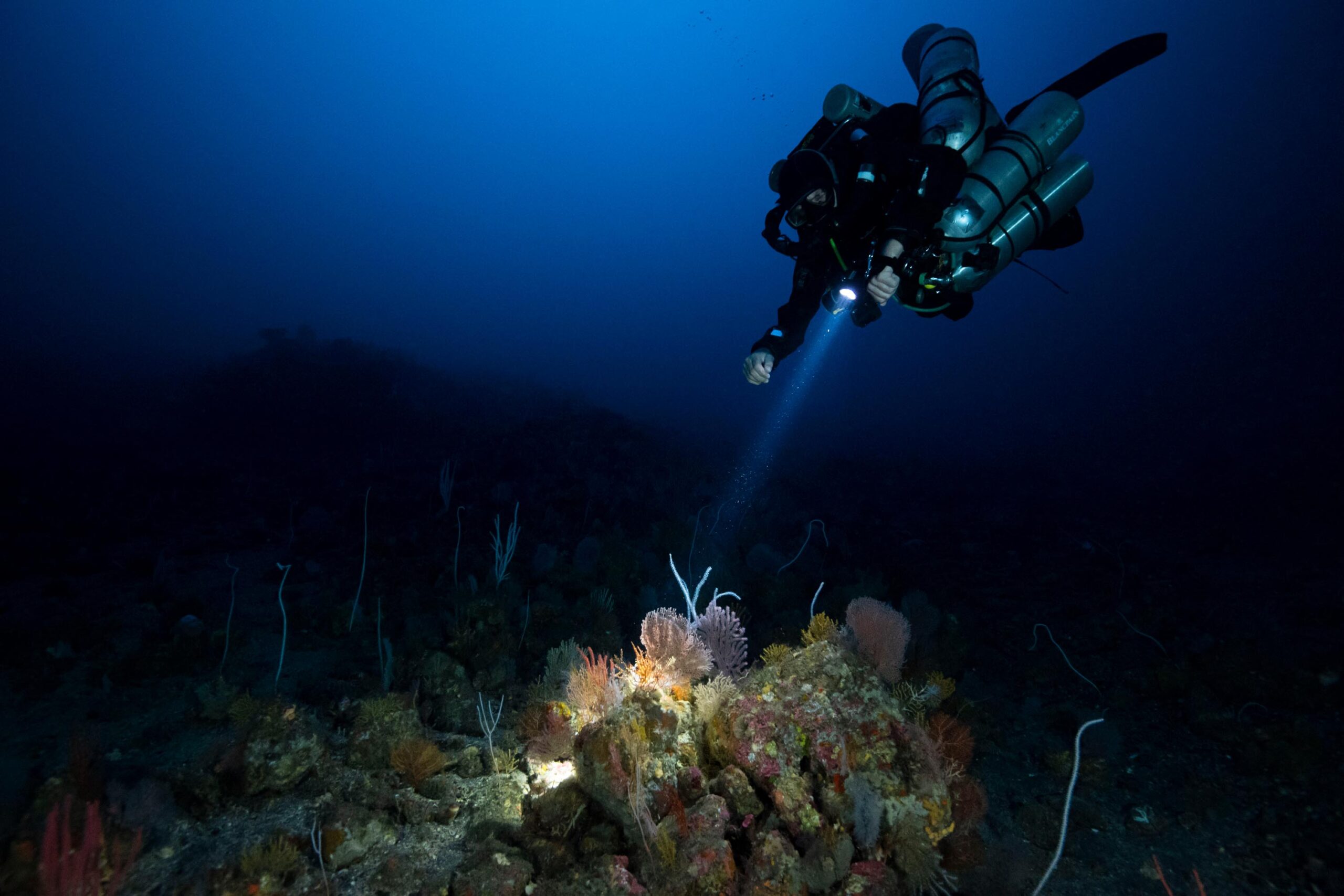
Why is it essential to study MCEs?
As they are poorly studied, very few people are aware of their existence. Consequently, they are rarely considered in management plans like Marine Protected Areas. In fact, they are one of the least protected natural habitats on Earth, despite their ecological importance and having a more extensive geographic range than their shallower counterparts. They are critical for many marine organisms at various stages of their life cycles, and some species can only be found there: they are endemic to MCEs.
MCEs can also host Marine Animal Forests, an habitat of the utmost importance in terms of biodiversity. But threats to these deep-reef ecosystems are real: deep-sea fishing, pollution (e.g. chemicals, plastic, noise), anchor damages… MCEs urgently need the protection they deserve.
Vertical connectivity exists between MCEs and the more famous shallow-water reefs. Because of this vertical connection, some fish might find in deeper habitats a refuge from human pressure in the shallower waters. Indeed, anthropogenic stress can tend to diminish — but not disappear — with depth.
Because MCEs are deeper, the water is usually cooler, and the solar irradiance is less intense. So the deep coral colonies are generally less impacted by bleaching events, which is good news for our Oceans. MCEs also harbour substantial numbers of new species yet to be discovered.
There are many other reasons to learn more about these unique ecosystems. We believe that by showing these natural wonders to the public, people will be more likely to feel connected and be willing to protect them.
We think at UNSEEN that conservation comes from awareness, as the More we know, the better we can preserve.
